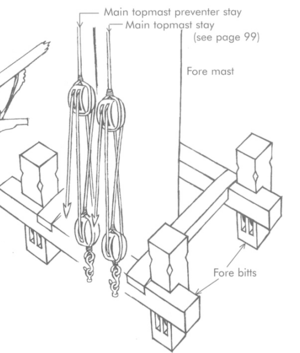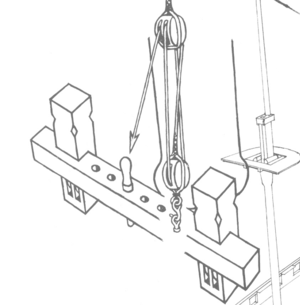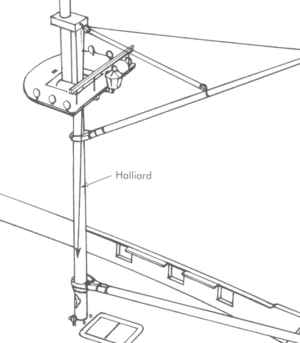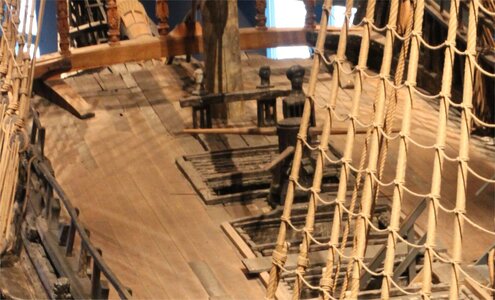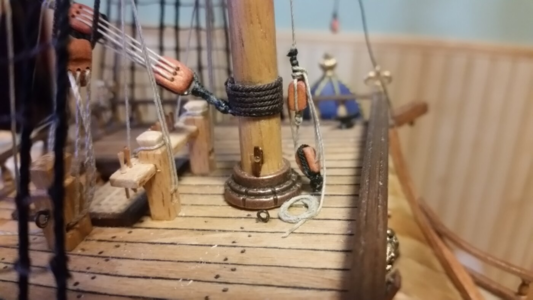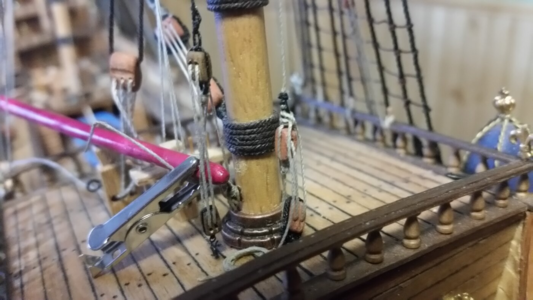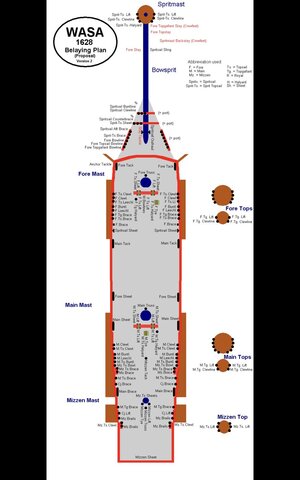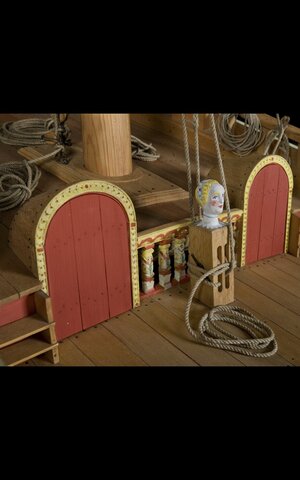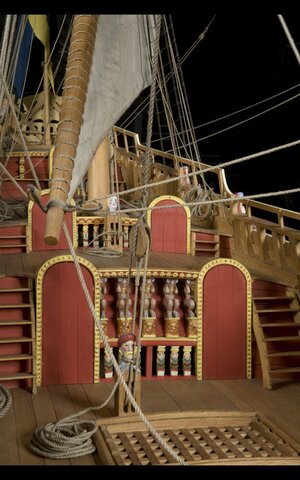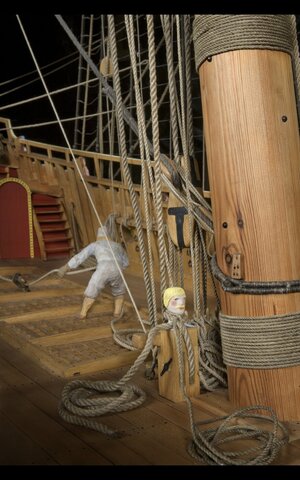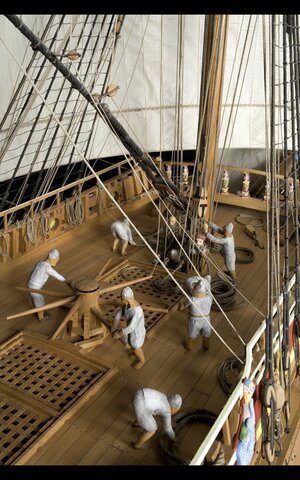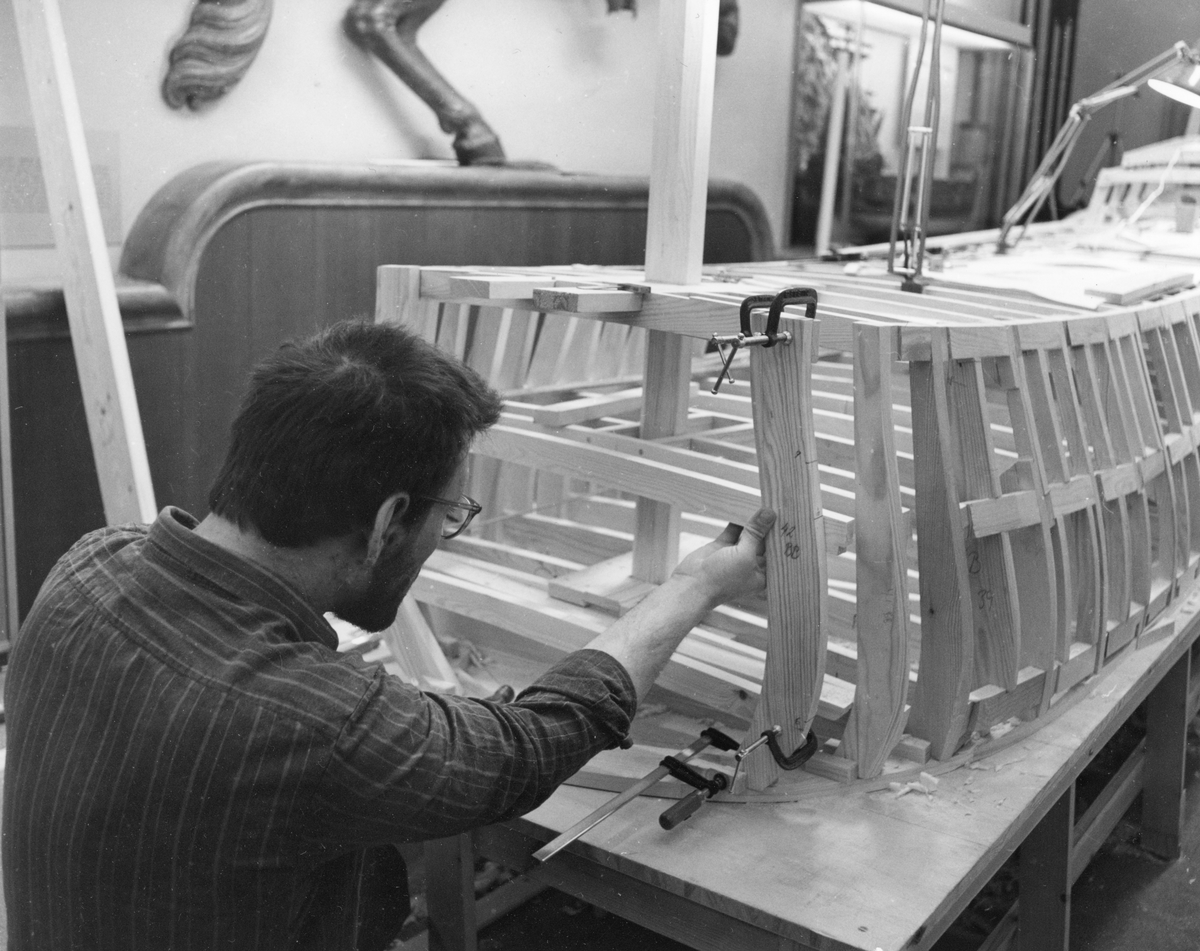Hello Experienced Ship Builders,
Here is a drawing of the belay points for running rigging on the 1628 Vasa.
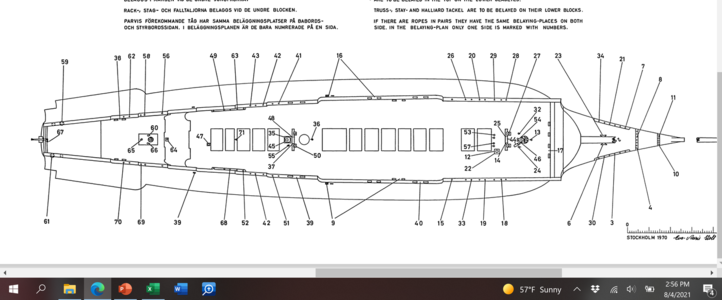
I understand I will be using pins along the headrails. My question is: what is being depicted with the belay locations on the deck? For example, locations 60, 65, 66, 55, 36, 53, 57, etc.? Are those locations for eyebolts? Or are they showing where blocks will be attached? If they are blocks would they be doubles? I'm trying to sort this out and install some of these things before the deck gets crowded.
Sorry for the elementary question - and thanks for any information you might be able to provide.
Here is a drawing of the belay points for running rigging on the 1628 Vasa.

I understand I will be using pins along the headrails. My question is: what is being depicted with the belay locations on the deck? For example, locations 60, 65, 66, 55, 36, 53, 57, etc.? Are those locations for eyebolts? Or are they showing where blocks will be attached? If they are blocks would they be doubles? I'm trying to sort this out and install some of these things before the deck gets crowded.
Sorry for the elementary question - and thanks for any information you might be able to provide.


